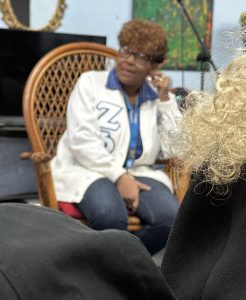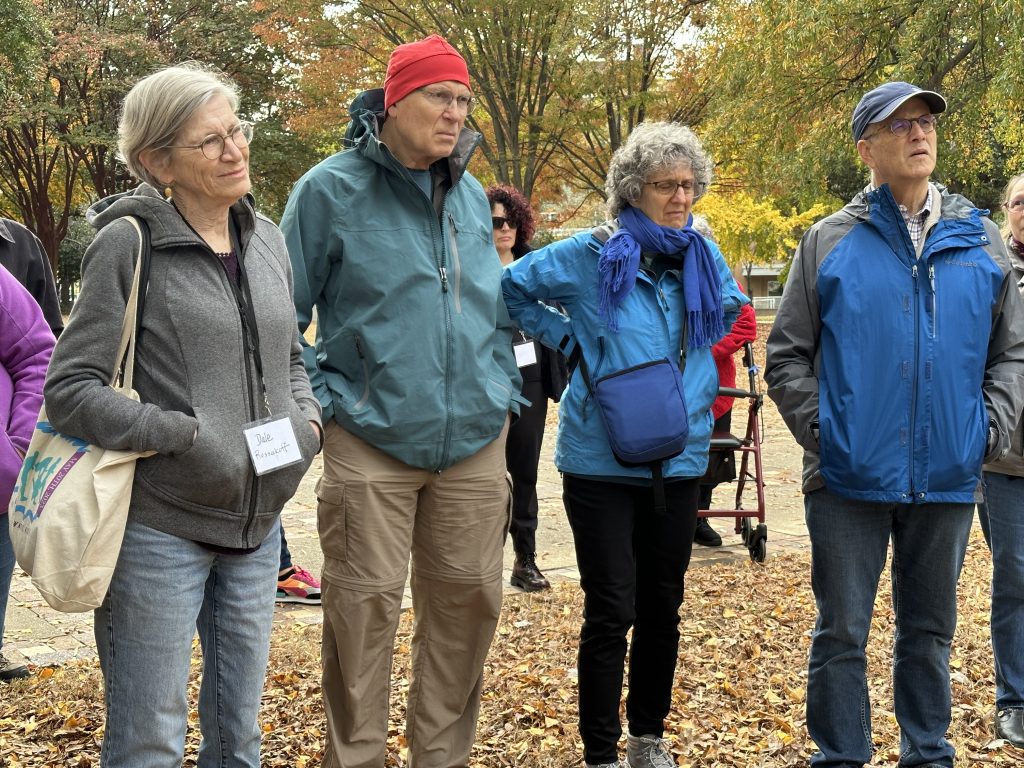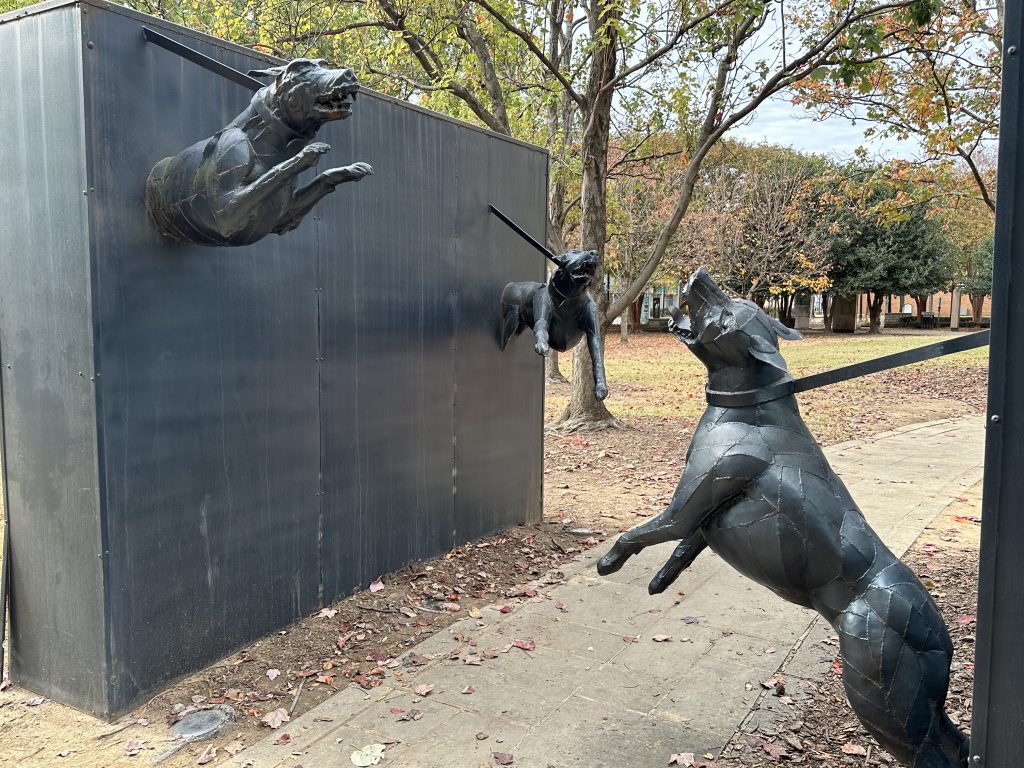As a young child I watched a show called You Were There featuring Walter Cronkite as host introducing reporters on the scene when significant events in history were occurring. The show consisted of reenactments of history bringing the viewer into the situation as it was happening. I saw the duel between Hamilton and Burr as well as the being witness to the first use of penicillin in 1945. According to Wikipedia, “At the end of the program, after Cronkite summarized what happened in the preceding event, he reminded viewers, ‘What sort of day was it? A day like all days, filled with those events that alter and illuminate our times… all things are as they were then, except you were there.’”
So it was with the Shomrei Civil Rights Tour. Thanks to an excellent young guide who had intimate knowledge of the entire period, we were transported back to the civil rights era and bore witness to significant events that occurred during a long and arduous struggle for black people to gain the same rights afforded to the white population which we take for granted. The trip personalized a struggle about which I was aware, except that it was history to me. Because of our guide and the excellent museums which told the stories better than I have ever seen in any museum, we were able to understand and experience the struggle from the point of view of the persecuted.
 One museum made you feel what it was like to be a slave, not just an observer. Of the many significant events we witnessed, perhaps the most moving to me were two: One was a story told by the youngest person to cross the Edmund Pettus bridge in Selma, and who also marched in the 54-mile march from Selma to Montgomery, Alabama to demand voting rights. She told stories of being incarcerated, but her most moving story was about the death of her mother following childbirth. Her mother was hemorrhaging following the birth of her infant. The closest hospital admitted only white patients, and although blood was available for transfusion, it was white blood, not available to her. Lifesaving (black) blood had to be sent by Greyhound bus from Montgomery to Selma. It arrived 15 minutes after her mother had died. After her father told her the story many years later, Linda understood why her father would always say, “Fifteen minutes”.
One museum made you feel what it was like to be a slave, not just an observer. Of the many significant events we witnessed, perhaps the most moving to me were two: One was a story told by the youngest person to cross the Edmund Pettus bridge in Selma, and who also marched in the 54-mile march from Selma to Montgomery, Alabama to demand voting rights. She told stories of being incarcerated, but her most moving story was about the death of her mother following childbirth. Her mother was hemorrhaging following the birth of her infant. The closest hospital admitted only white patients, and although blood was available for transfusion, it was white blood, not available to her. Lifesaving (black) blood had to be sent by Greyhound bus from Montgomery to Selma. It arrived 15 minutes after her mother had died. After her father told her the story many years later, Linda understood why her father would always say, “Fifteen minutes”.
(If you think the situation has significantly changed, think again. If you are a black person in certain states in the United States, you might as well live in a third world country since your chance of surviving childbirth is no better. According to a lecture on Reproductive Health I attended at the Hackensack-Meridian School of Medicine, black women are 3-4 times more likely to die from pregnancy-related causes than white women. For the NY/NJ area black women are 7-8 times more likely to die than their white counterparts.)
One other of the many moving sites we visited was a park in Birmingham, the site of the Children’s Crusade, and where the bombing of the 16th Street Baptist Church killing four young black girls occurred. While I was vaguely aware of the Children’s Crusade and the firehoses used to suppress the youthful marchers, I had no idea that these hoses were so powerful that one of the hoses stripped a tree of its bark. These were the hoses used on young children to prevent them from peaceful protest.
At the park we walked through a monument comprised of a wall on either side through which we walked. On the wall were heads of attack dogs just waiting to take a bite of flesh. It was an eerie feeling, even knowing it was a sculpture, realizing that the real dogs were trained to hurt, maim and even kill people upon command from their white police owners.
The trip added to my knowledge of the civil rights struggle, but more importantly, it changed my understanding of what the black population had to endure, suffer and ultimately struggle against beginning in 1619 when the first black slaves were forcibly brought to this country.
Images: Photos taken by Sarita Eisenberg
- Reflections on the Civil Rights Trip: Changing My View of History - Thu, Jan 4, 2024
- Shabbat Shuva - Tue, Sep 19, 2023
- New Social Group at Shomrei - Thu, Apr 20, 2023



Ken, Your reflections brought back the power of those museums and sculptures. The dogs were almost real. The museums were among the best I’ve ever seen. To see is to believe.
Thank you, Ken, for your moving and informative recount of the Civil Rights trip.
Thank you for sharing this vivid account of your memorable trip. Every school child in America should be required to visit theses museums and parks (as well as the National Holocaust Museum.)
Well said Ken!
Ken, you summarized the Civil Rights trip succinctly. The museums were amazing. Lifelike exhibits, sculpture, music and verse are designed to reach and teach us through all our senses about the slave trade and its consequences for the Southern Black population.